Cactus Craze: 20 Must-Have Varieties for Your Home
Cacti are excellent low-maintenance plants that can bring some natural beauty to your home or office, even if you don’t have a lot of space or natural light. In this article, we’ll introduce you to the 20 best cactus varieties for indoor settings, complete with pictures and care tips. From the iconic Saguaro Cactus to the colorful Easter Cactus, there’s a cactus for everyone. So, let’s start our journey through the world of indoor cacti!
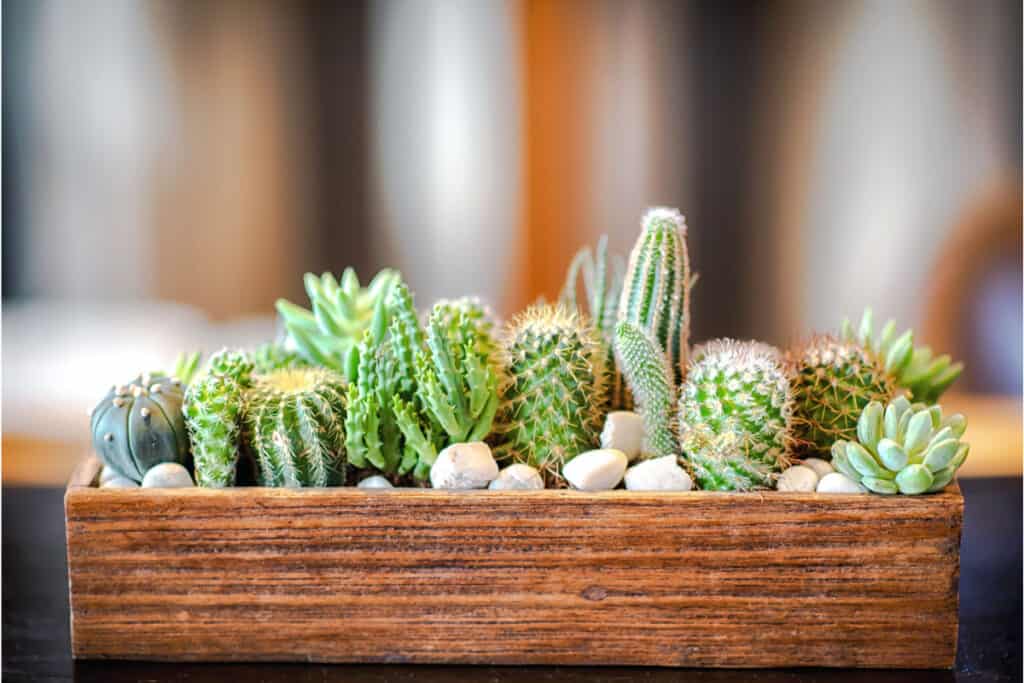
Contents
- 1 20 Best Cactus For Indoors
- 1.1 1. Star Cactus (Astrophytum asterias)
- 1.2 2. Rat Tail Cactus (Aporocactus flagelliformis)
- 1.3 3. Bishop’s Cap (Astrophytum myriostigma)
- 1.4 4. Eves Needle Cactus (Austrocylindropuntia subulata)
- 1.5 5. Saguaro Cactus (Carnegiea gigantea)
- 1.6 6. Barrel Cactus (Echinocactus Grusonii)
- 1.7 7. Fishbone Cactus (Epiphyllum anguliger)
- 1.8 8. Cowboy Cactus (Euphorbia ingens)
- 1.9 9. Candelabra Cactus (Euphorbia lactea)
- 1.10 10. Chin Cactus (Gymnocalycium baldianum)
- 1.11 11. Moon Cactus (Gymnocalycium mihanovichii)
- 1.12 12. Easter Cactus (Hatiora gaertneri)
- 1.13 13. Mexican Fence Post Cactus (Lophocereus marginatus)
- 1.14 14. Senita Cactus (Lophocereus schottii)
- 1.15 15. Feather Cactus (Mammillaria plumosa)
- 1.16 16. Melon Cactus (Melocactus)
- 1.17 17. Blue Myrtle Cactus (Myrtillocactus geometrizans)
- 1.18 18. Prickly Pear Cactus (Opuntia ficus-indica)
- 1.19 19. Bunny Ears Cactus (Opuntia microdasys)
- 1.20 20. Christmas Cactus (Schlumbergera x buckleyi)
- 2 Do Cacti Do Well Indoors?
- 3 Can Cactus Live In A Room With No Sunlight?
- 4 How Big Do Indoor Cactus Get?
- 5 What Is The Fastest Growing Indoor Cactus?
- 6 What Is The Easiest Cactus To Take Care Of?
- 7 How Long Can A Cactus Live Indoors?
- 8 How Do You Keep A Cactus Alive In Your House?
- 9 Can Cacti Survive In A Bathroom?
- 10 How Often Do You Water Cacti Indoors?
- 11 Do Indoor Cactus Need Special Soil?
- 12 Do Indoor Cacti Attract Bugs?
- 13 Does Indoor Cactus Purify Air?
- 14 Can You Sleep With A Cactus In The Room?
- 15 Conclusion
20 Best Cactus For Indoors
1. Star Cactus (Astrophytum asterias)
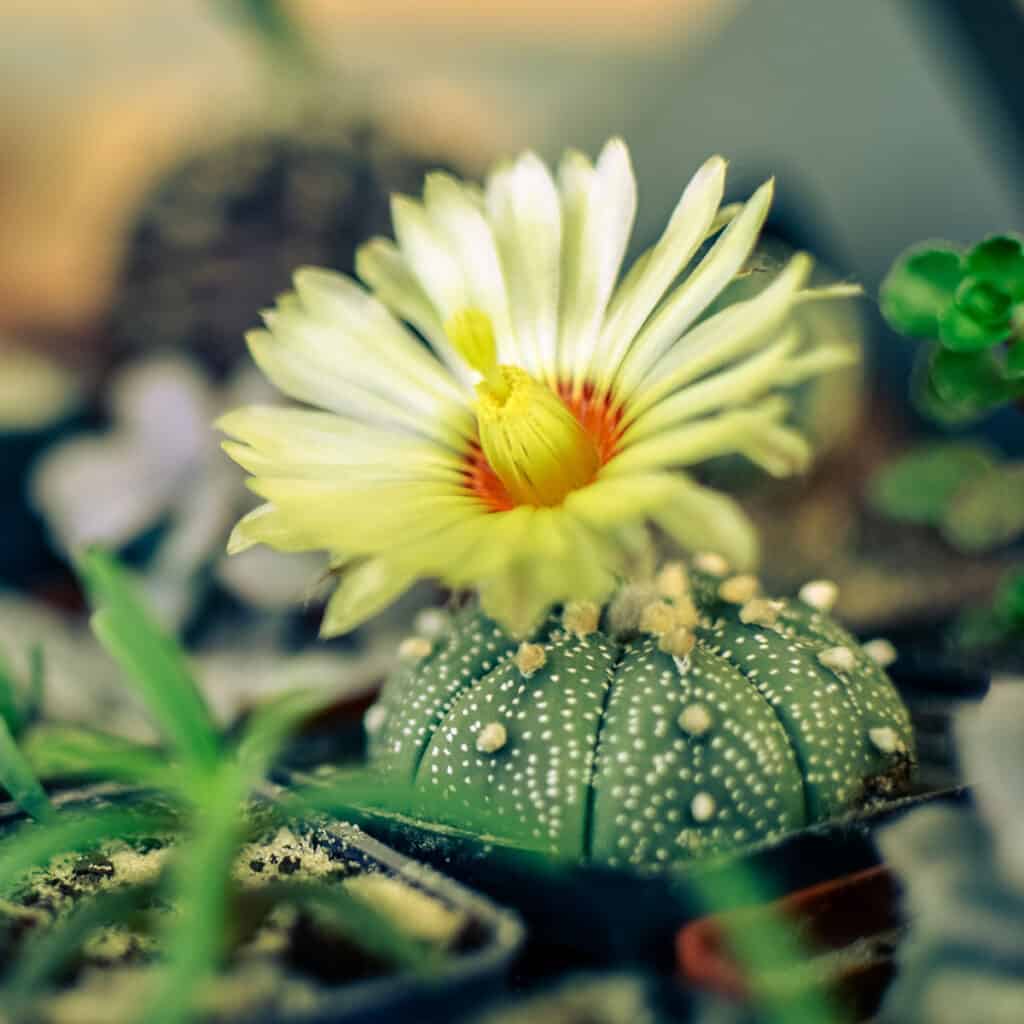
This cactus is from Mexico and is known for its small size, typically growing to be less than 6 inches tall and wide. It has a star-shaped body with 5 to 8 ribs separated by deep grooves. The ribs are adorned with clusters of white or yellow spines. The spines are surrounded by thin, papery coverings that eventually fall off as the cactus matures. Star cactus produces small, yellow flowers that bloom in the spring and summer.
2. Rat Tail Cactus (Aporocactus flagelliformis)
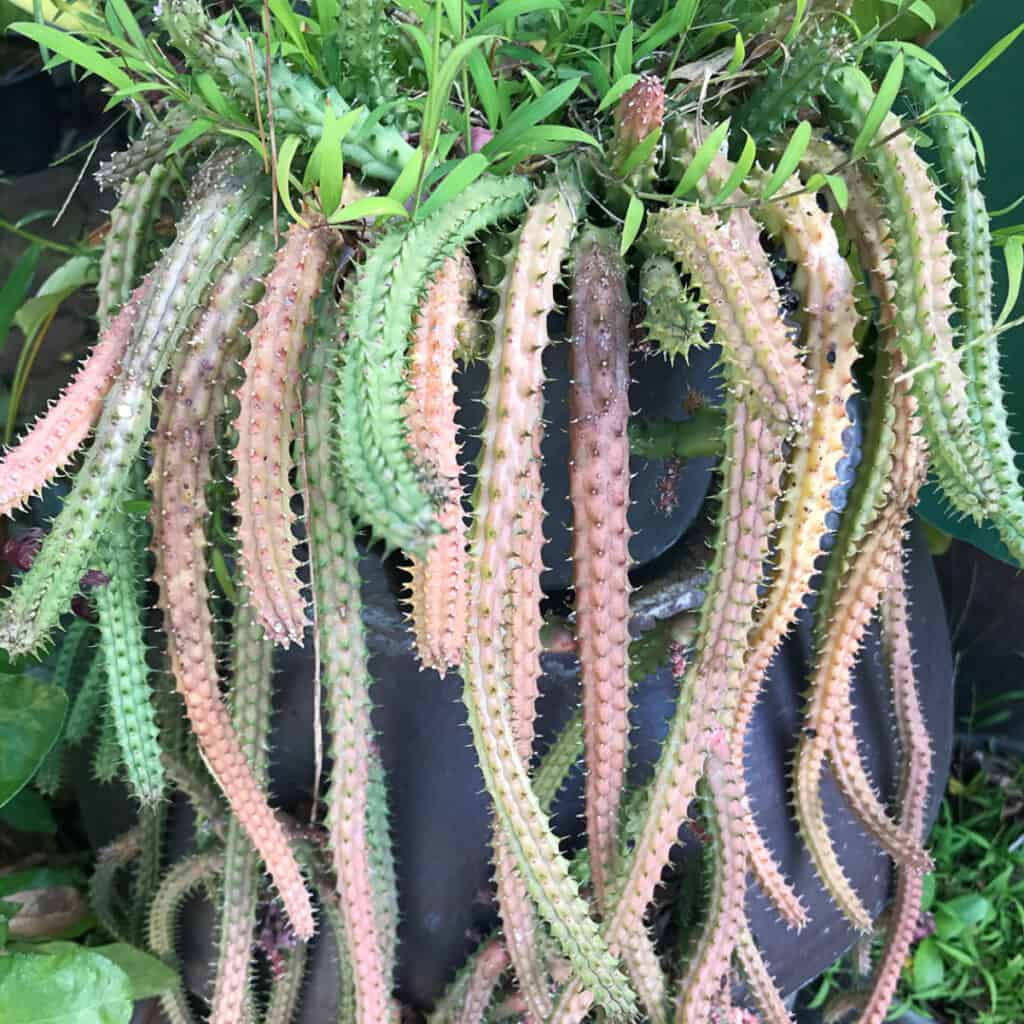
This cactus is from Mexico and is characterized by its long, thin, trailing stems that resemble a rat’s tail. The stems are typically green in color and are covered in small, spiky thorns. The cactus produces small, pink or red flowers that bloom in the spring and summer.
3. Bishop’s Cap (Astrophytum myriostigma)
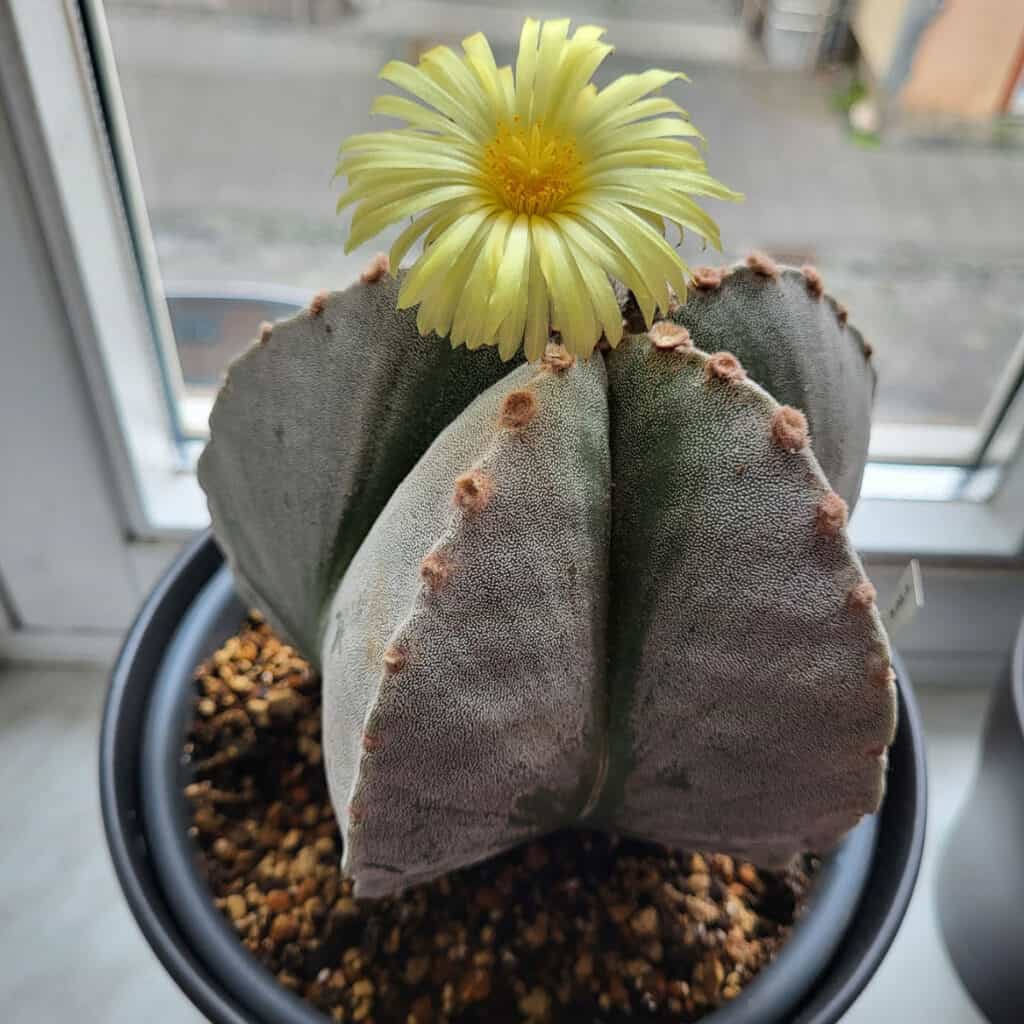
This cactus is from Mexico and is known for its small size, typically growing to be less than 6 inches tall and wide. It has a spherical body with numerous ribs separated by deep grooves. The ribs are adorned with clusters of white or yellow spines. The spines are surrounded by thin, papery coverings that eventually fall off as the cactus matures. Bishop’s cap produces small, yellow flowers that bloom in the spring and summer.
4. Eves Needle Cactus (Austrocylindropuntia subulata)
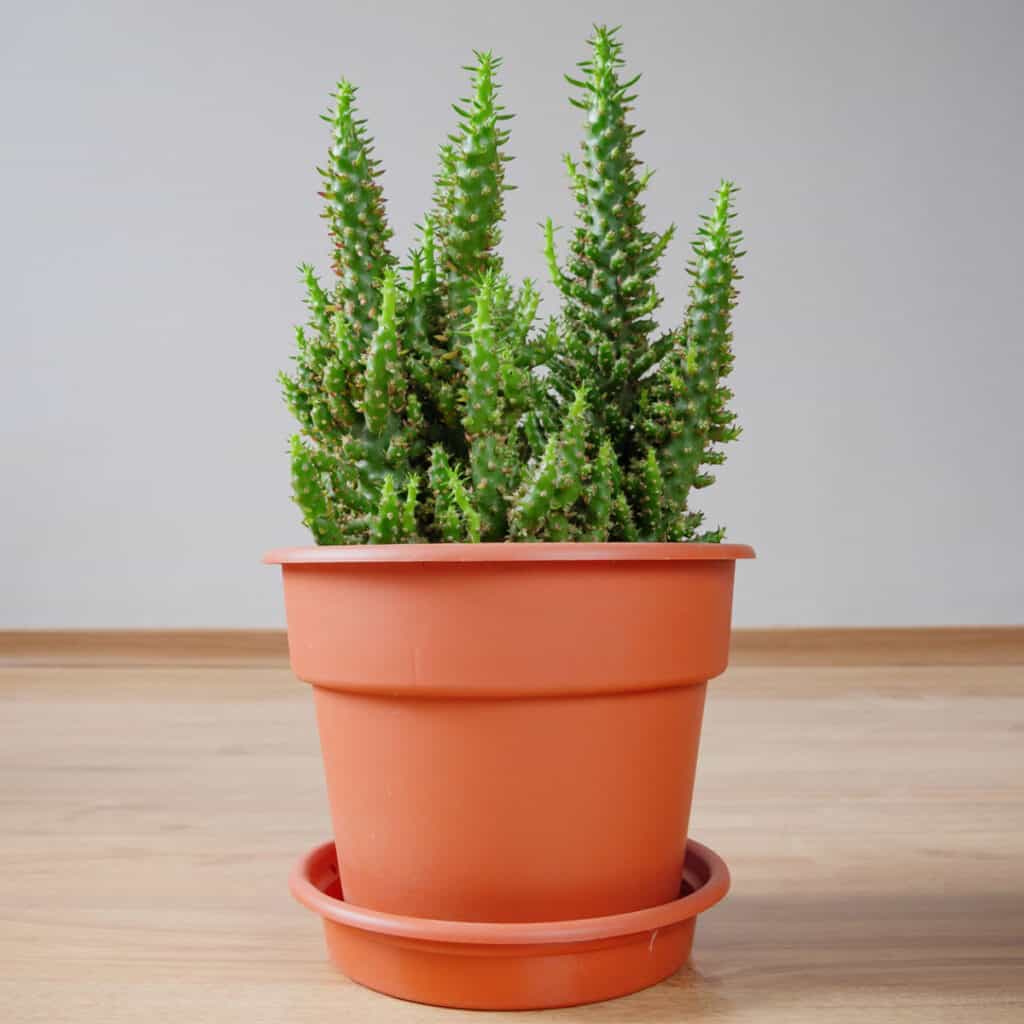
This cactus is native to South America and is characterized by its thin, cylindrical stems that are armed with sharp spines. The stems are typically green in color and can grow to be several feet long. The cactus produces small, yellow flowers that bloom in the spring and summer.
5. Saguaro Cactus (Carnegiea gigantea)
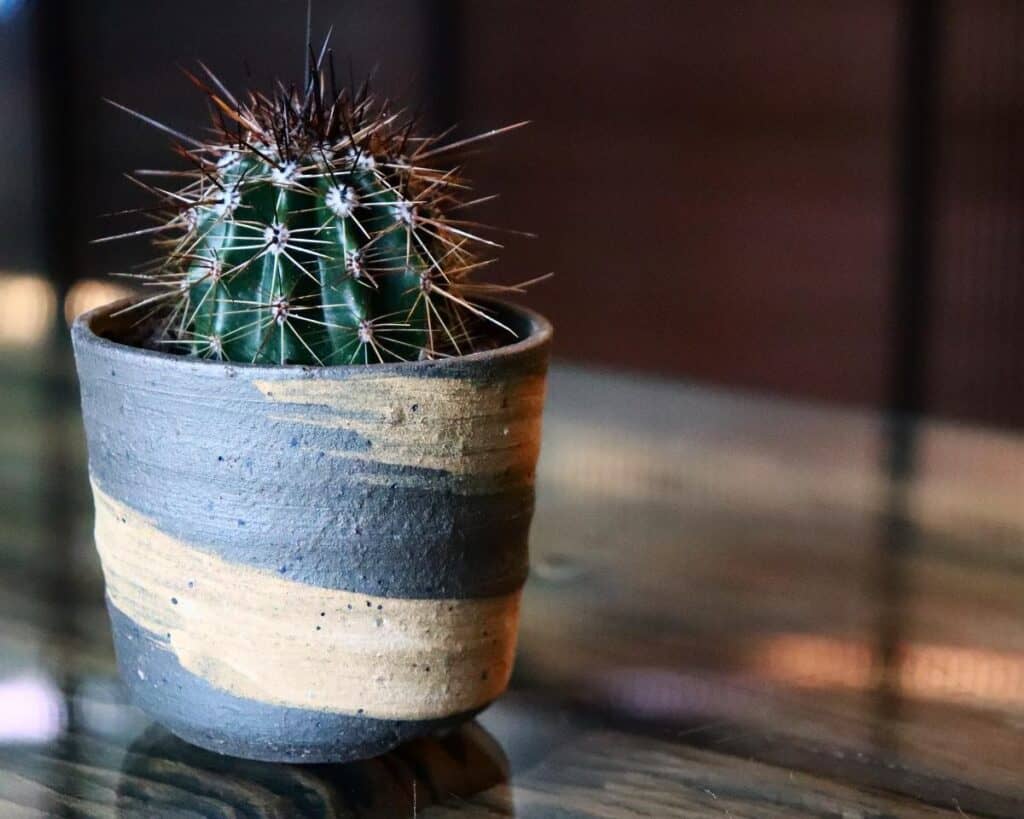
This cactus is native to the southwestern United States and is characterized by its tall, branching stems that can grow to be over 50 feet tall. The stems are ribbed and are covered in clusters of spines that are typically white or yellow in color. The cactus produces large, white flowers that bloom in the spring and summer.
6. Barrel Cactus (Echinocactus Grusonii)
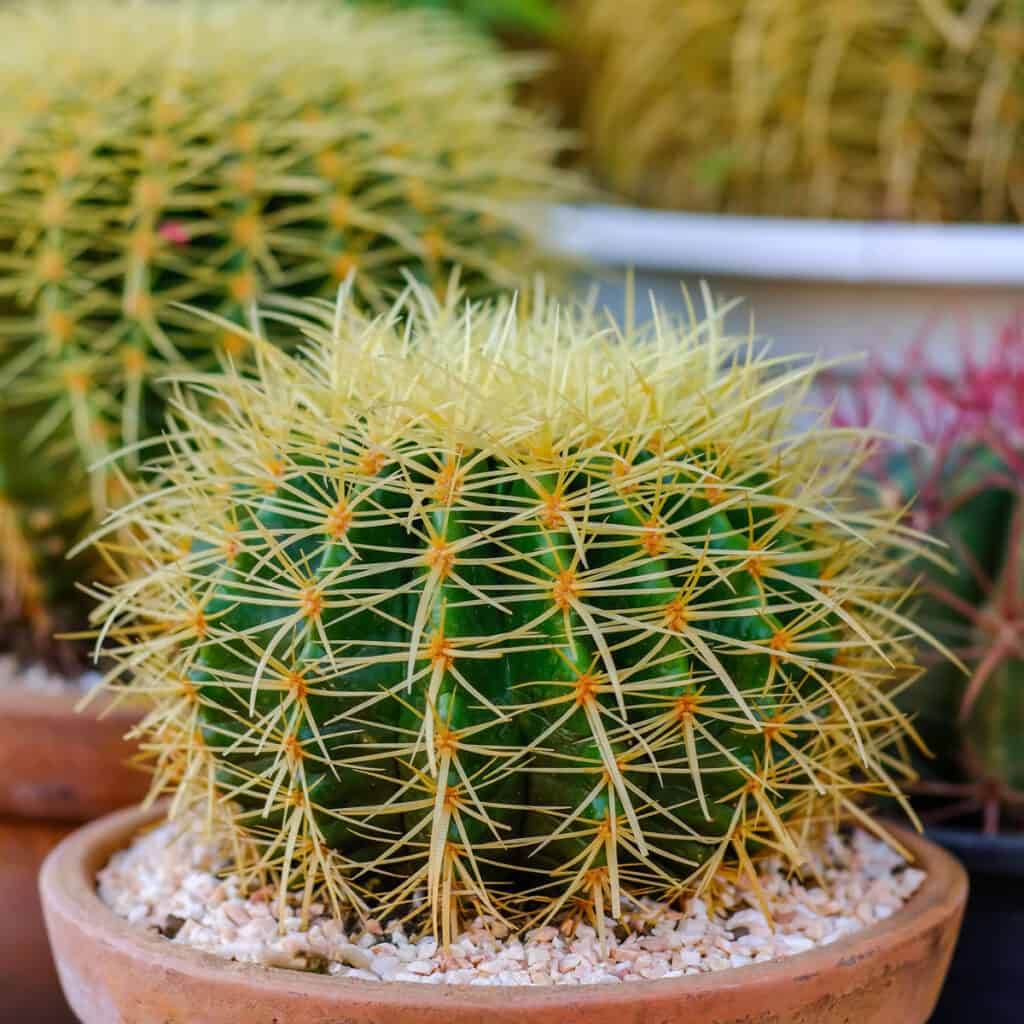
This cactus is native to Mexico and is characterized by its rounded, barrel-shaped body and numerous ribs. The body is typically green in color and is covered in spines that are typically white or yellow in color. The cactus produces small, yellow flowers that bloom in the spring and summer.
7. Fishbone Cactus (Epiphyllum anguliger)
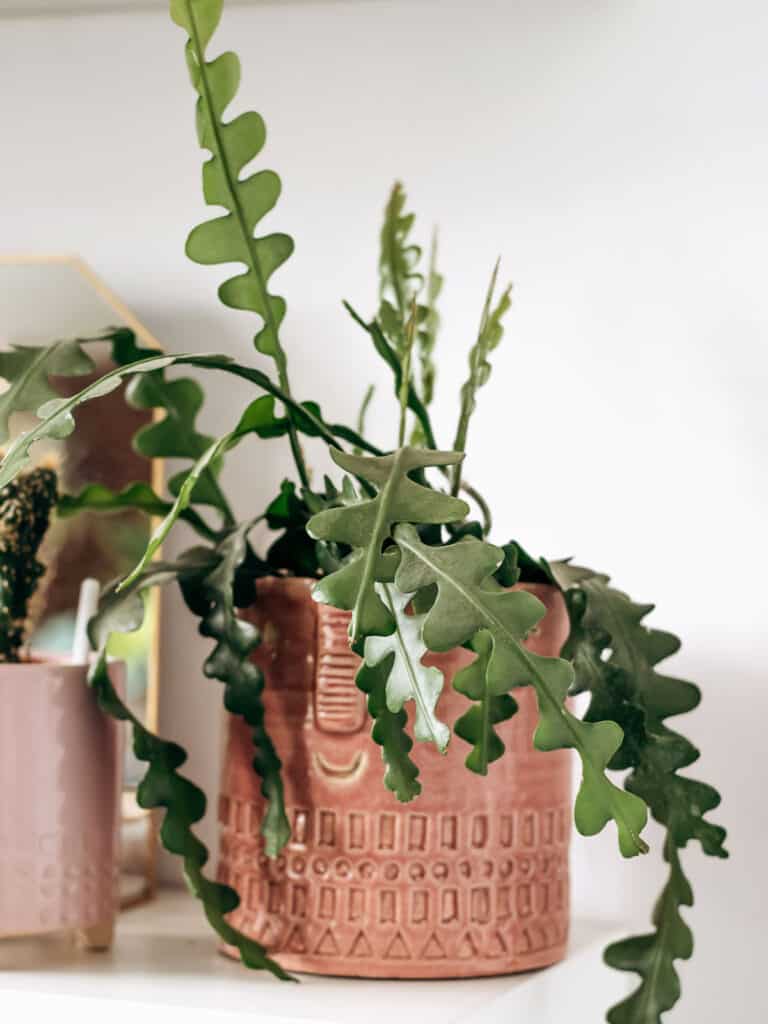
This cactus is native to Central and South America and is characterized by its flat, leaf-like stems that are divided into numerous narrow segments. The stems are typically green in color and are covered in small spines. The cactus produces small, white or pink flowers that bloom at night.
8. Cowboy Cactus (Euphorbia ingens)
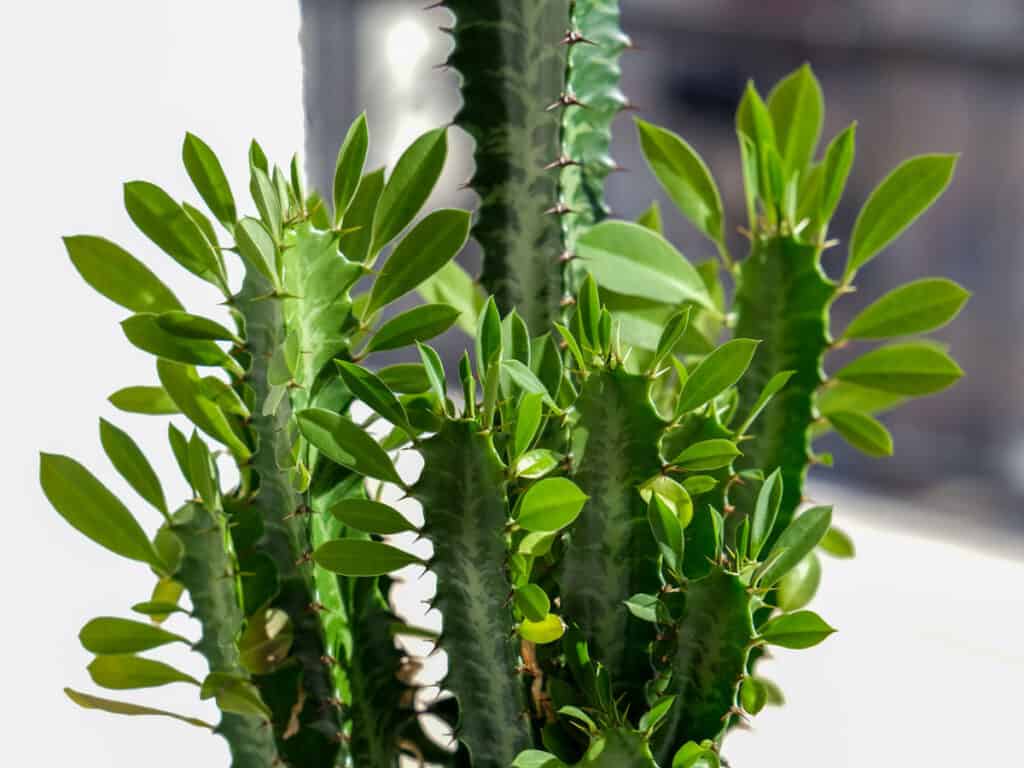
This cactus is native to South Africa and is characterized by its tall, branching stems that can grow to be over 30 feet tall. The stems are ribbed and covered in small, spiky thorns. The cactus produces small, yellow or green flowers that bloom in the spring and summer.
9. Candelabra Cactus (Euphorbia lactea)
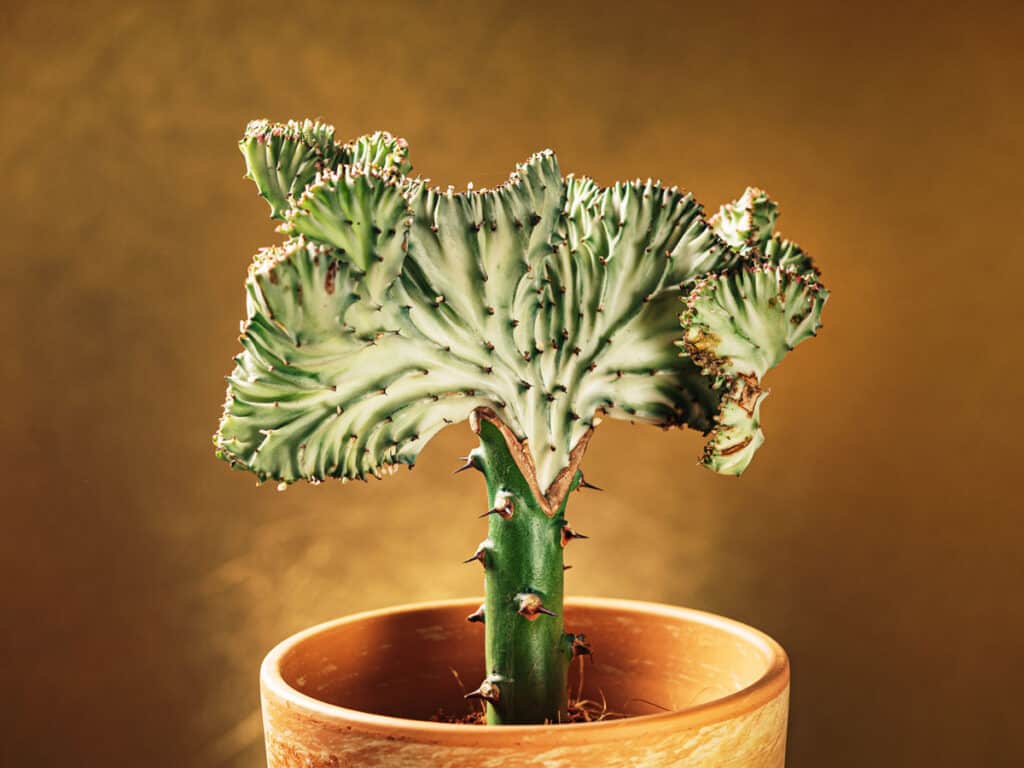
The Candelabra Cactus is a cactus native to India that is characterized by its upright, branching stems that resemble a candelabra. The stems are ribbed and covered in small, spiky thorns. The cactus produces small, yellow or green flowers that bloom in the spring and summer. The plant can grow to be several feet tall.
10. Chin Cactus (Gymnocalycium baldianum)
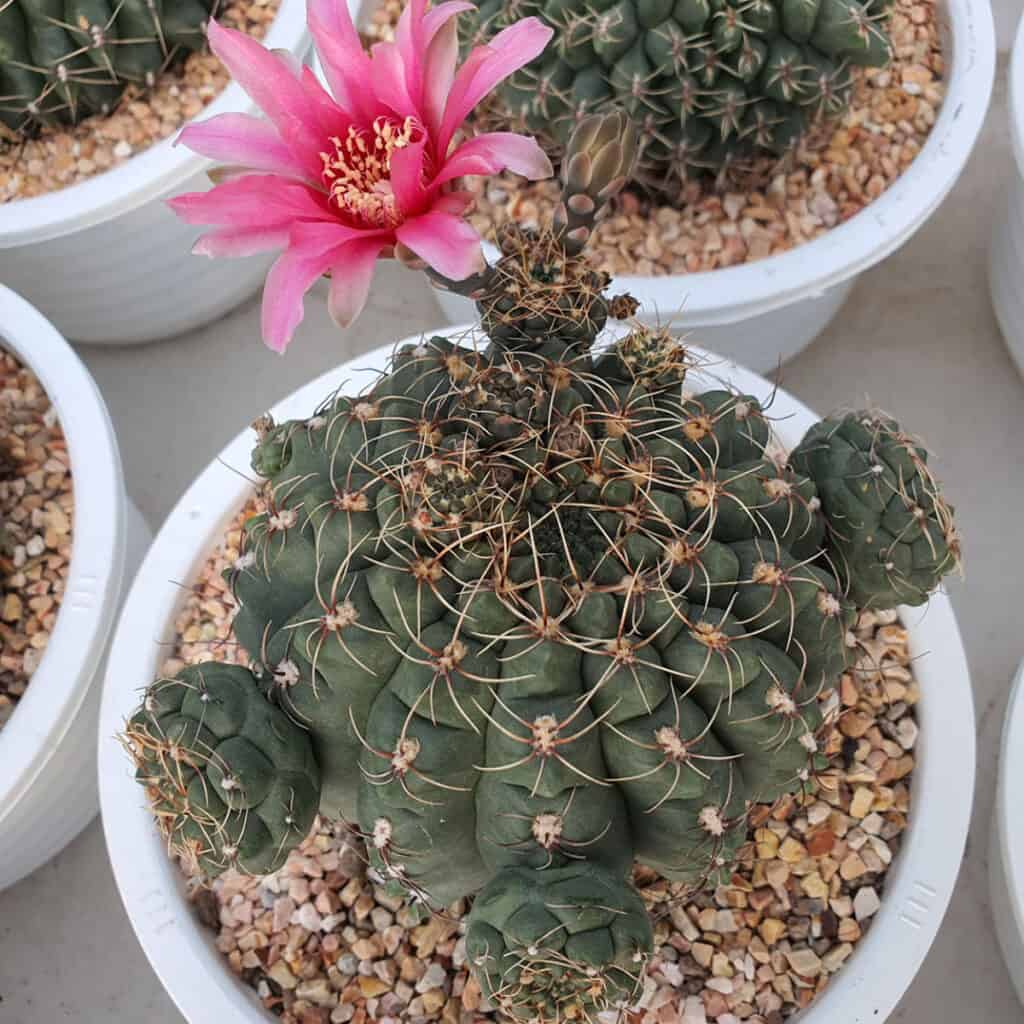
This cactus is native to South America and is characterized by its small size, typically growing to be less than 6 inches tall and wide. It has a spherical body with numerous ribs that are adorned with clusters of spines. The spines are typically white or pink in color and are surrounded by thin, papery sheaths that eventually fall off as the cactus matures. Chin cactus produces small, pink or red flowers that bloom in the spring and summer.
11. Moon Cactus (Gymnocalycium mihanovichii)
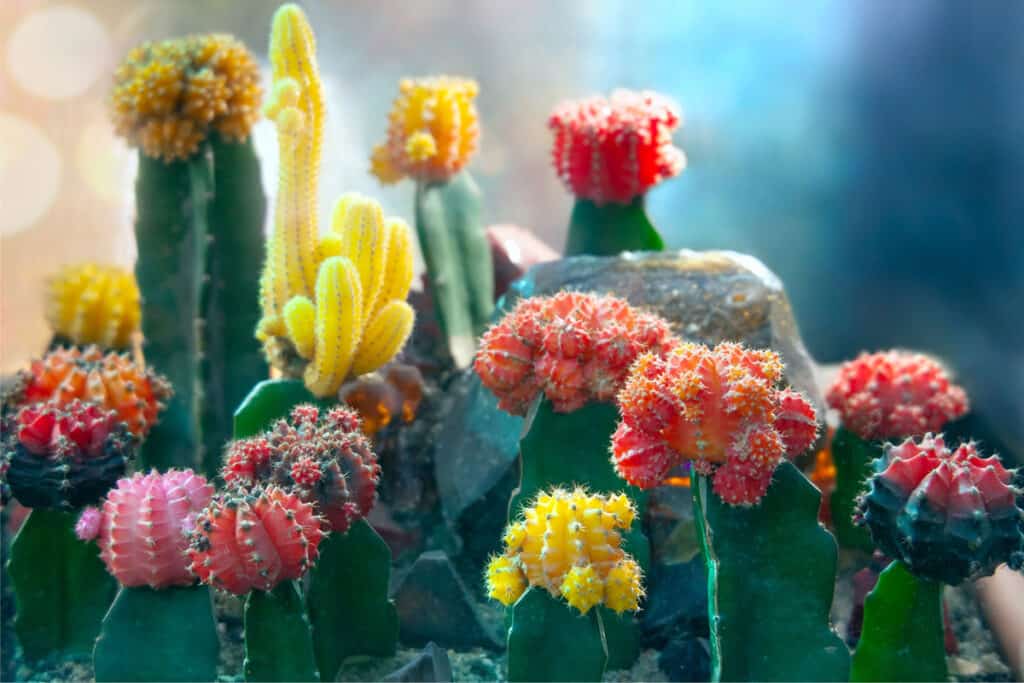
The Moon Cactus is a small cactus that typically grows to be less than 6 inches tall and wide. It has a spherical body with numerous ribs that are adorned with clusters of spines. The spines are typically white or pink in color and are surrounded by thin, papery sheaths that eventually fall off as the cactus matures. Moon cactus produces small, pink or red flowers that bloom in the spring and summer. The plant is native to South America.
12. Easter Cactus (Hatiora gaertneri)
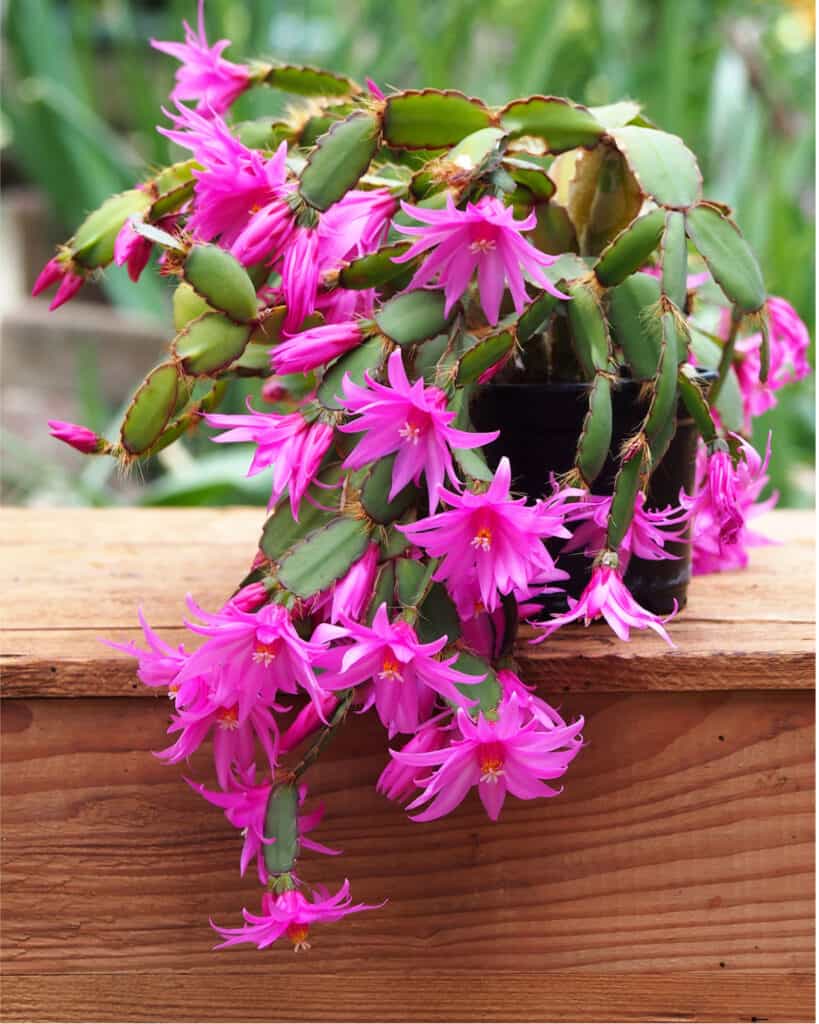
This cactus is native to Brazil and is characterized by its elongated, flattened stems that are typically green in color. The stems are adorned with small spines and produce colorful flowers that bloom in the spring. The flowers are typically red, pink, or white in color and are shaped like tubes.
13. Mexican Fence Post Cactus (Lophocereus marginatus)
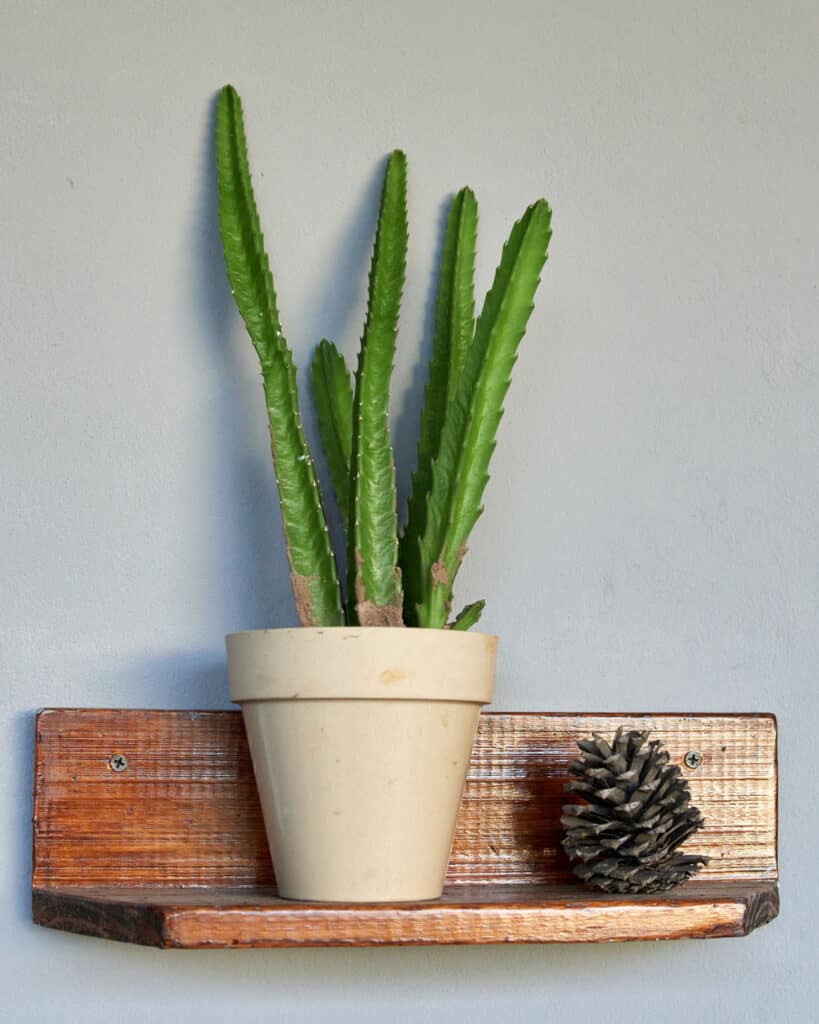
This cactus is native to Mexico and is characterized by its tall, slender stems that can grow to be over 30 feet tall. The stems are ribbed and are covered in small spines. The cactus produces small, white flowers that bloom in the spring and summer.
14. Senita Cactus (Lophocereus schottii)
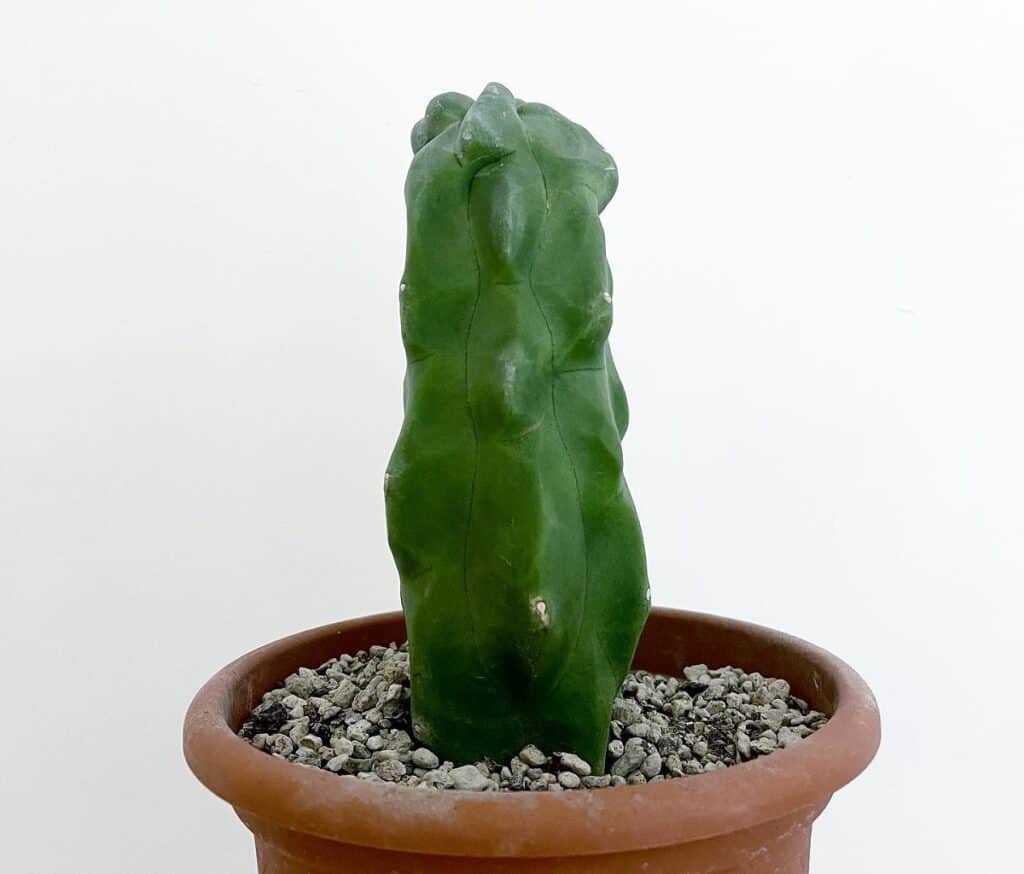
This cactus is native to Mexico and is characterized by its tall, branching stems that can grow to be over 30 feet tall. The stems are ribbed and are covered in small spines. The cactus produces small, white flowers that bloom in the spring and summer.
15. Feather Cactus (Mammillaria plumosa)
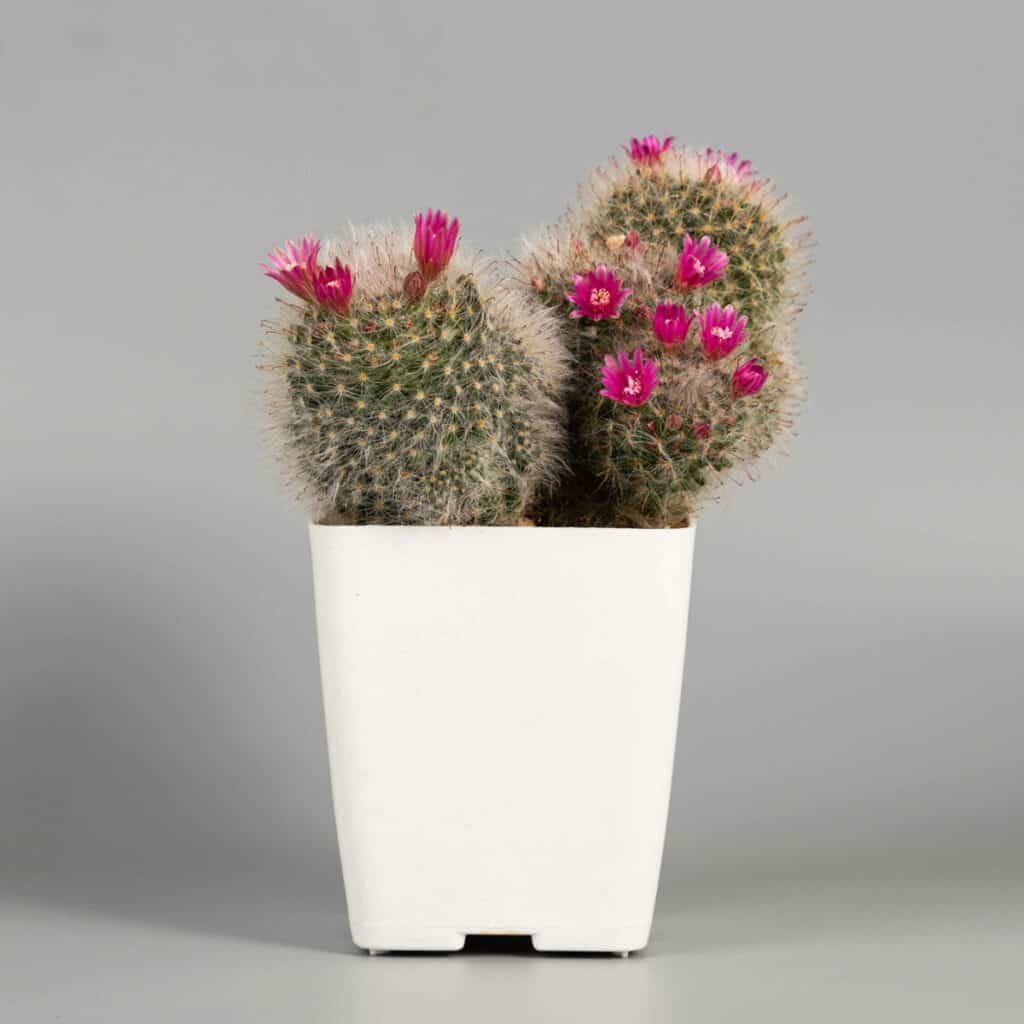
This cactus is native to Mexico and is characterized by its small size, typically growing to be less than 6 inches tall and wide. It has a spherical body with numerous ribs that are adorned with clusters of spines. The spines are thin and feathery in appearance, hence the name “feather cactus.” The cactus produces small, pink or red flowers that bloom in the spring and summer.
16. Melon Cactus (Melocactus)
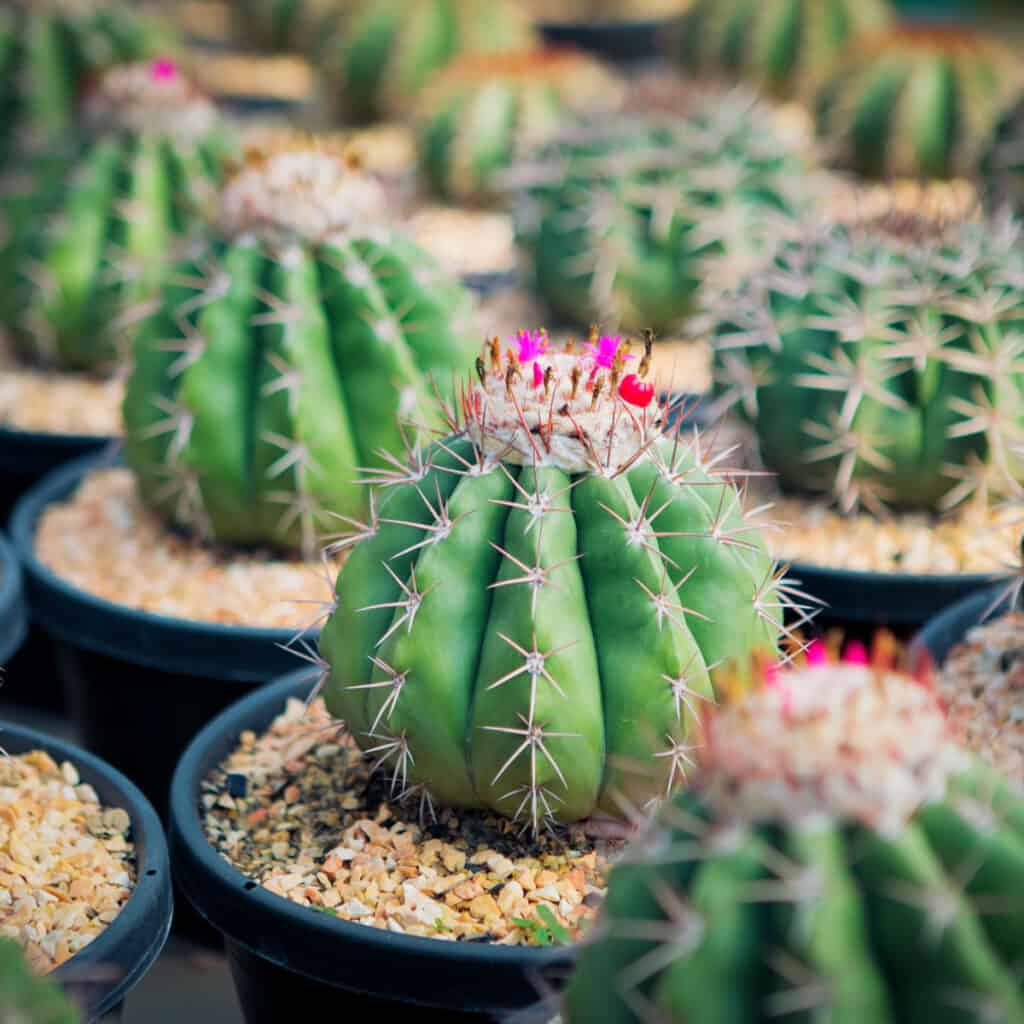
This cactus is native to Central and South America and is characterized by its round body and numerous spines. The body is typically green in color and is adorned with spines that are typically white or pink in color. The cactus produces small, pink or red flowers that bloom in the spring and summer.
17. Blue Myrtle Cactus (Myrtillocactus geometrizans)
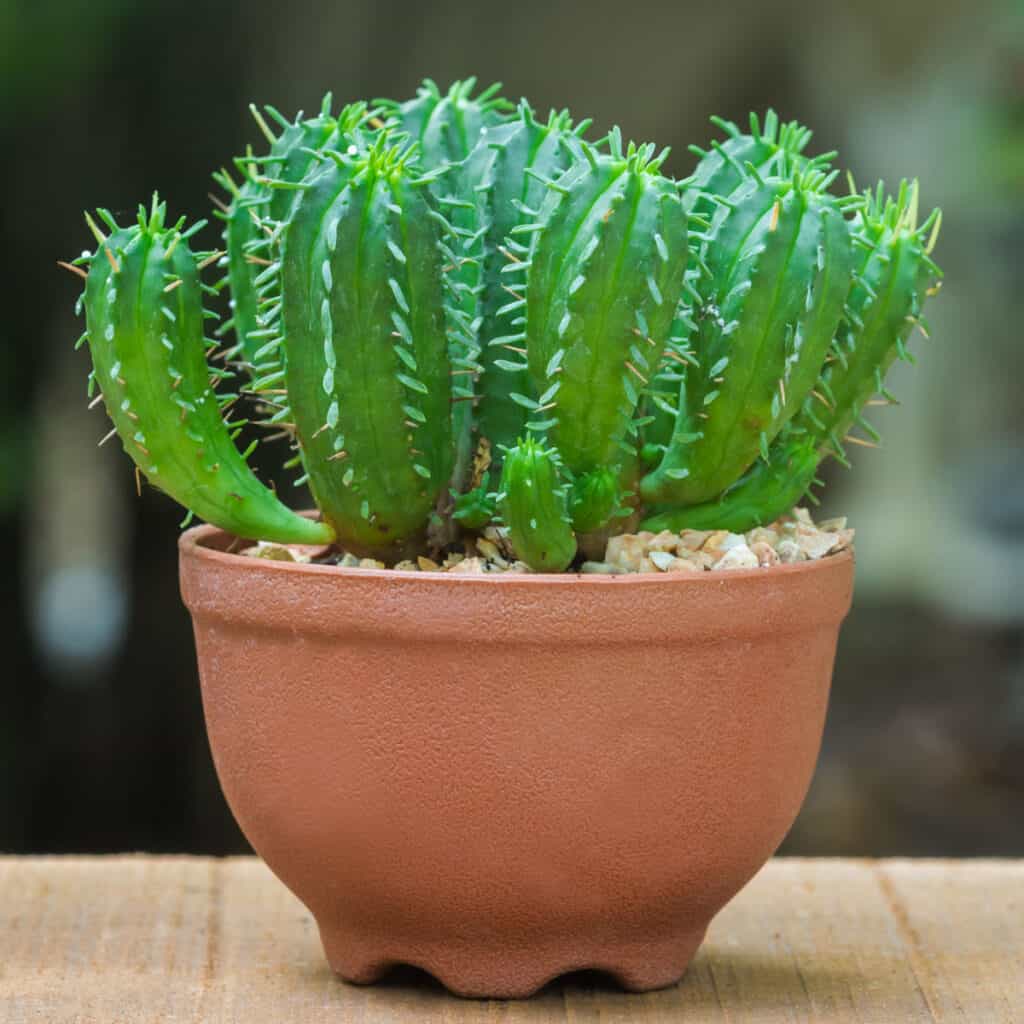
This cactus is native to Mexico and is characterized by its tall, branching stems that are typically blue-gray in color. The stems are ribbed and are covered in small spines. The cactus produces small, pink or red flowers that bloom in the spring and summer.
18. Prickly Pear Cactus (Opuntia ficus-indica)
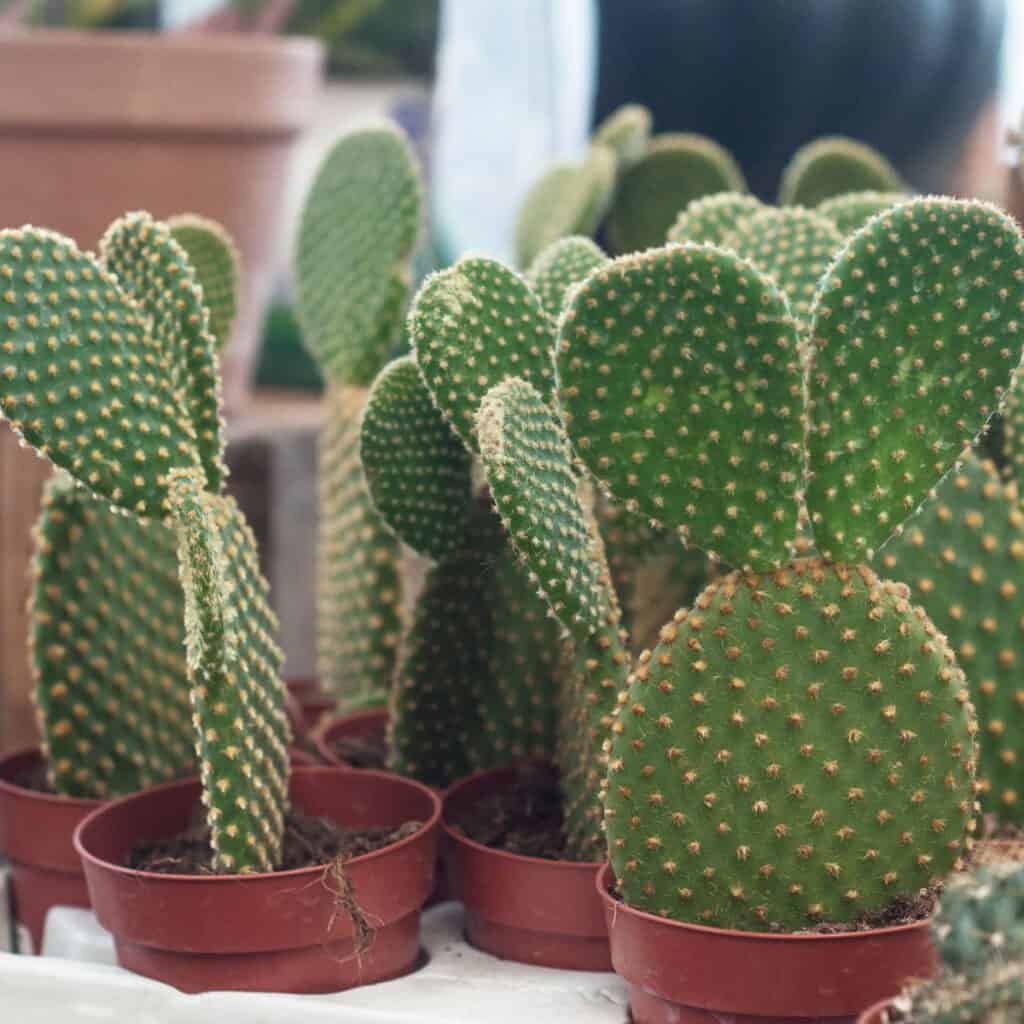
This cactus is native to Mexico and is characterized by its flat, paddle-shaped stems that are typically green in color. The stems are adorned with small spines and are covered in a thin layer of fuzzy hair. The cactus produces colorful flowers that bloom in the spring and summer, followed by edible fruits known as “tuna”.
19. Bunny Ears Cactus (Opuntia microdasys)
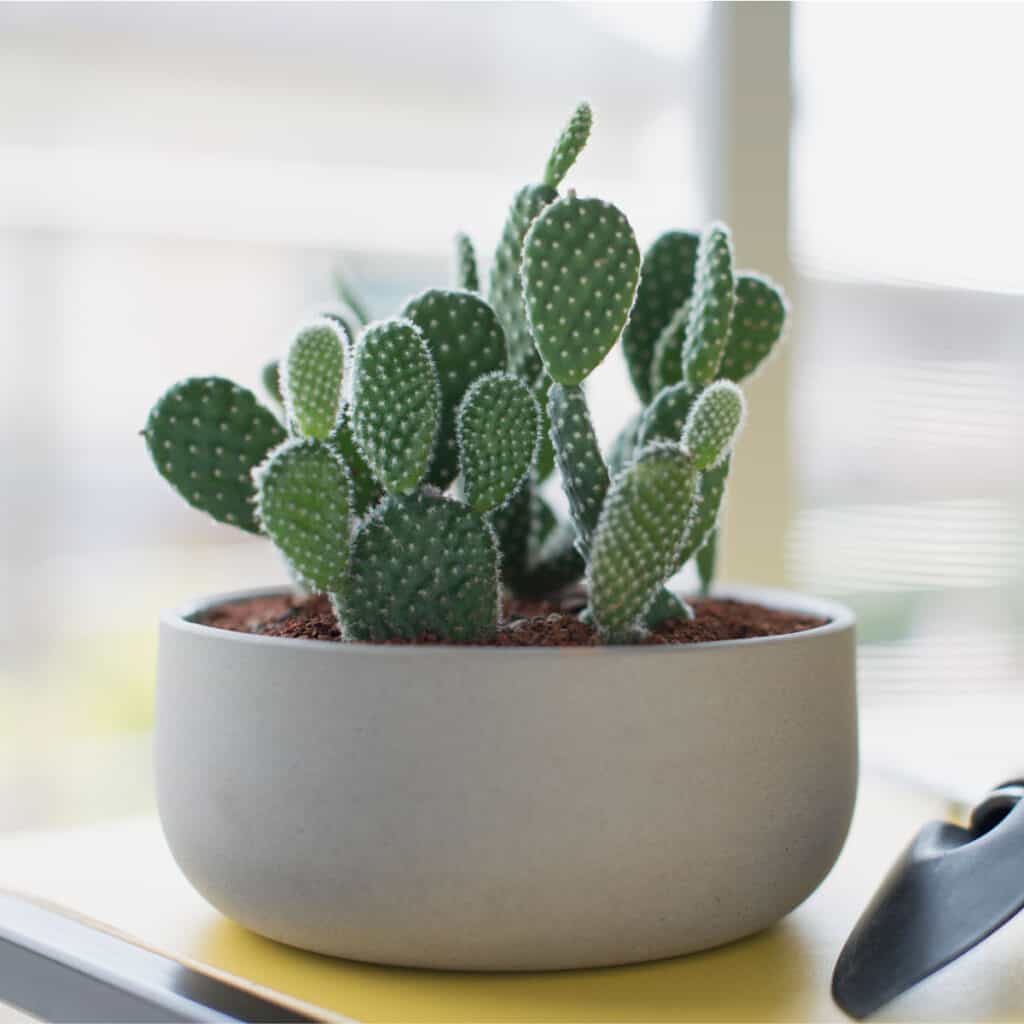
This cactus is native to Mexico and is characterized by its small size, typically growing to be less than 6 inches tall and wide. It has rounded, bunny ear-shaped stems that are typically green in color. The stems are adorned with small spines and are covered in a thin layer of fuzzy hair. The cactus produces small, yellow or red flowers that bloom in the spring and summer.
20. Christmas Cactus (Schlumbergera x buckleyi)
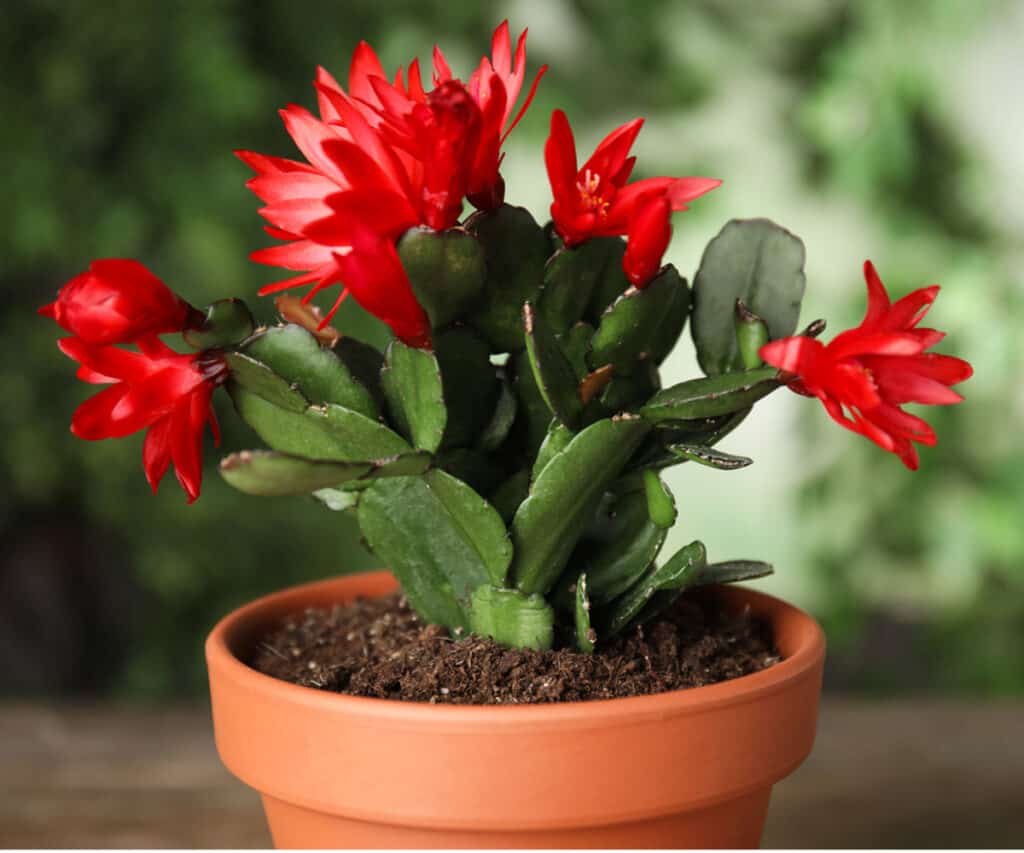
This cactus is native to Brazil and is characterized by its elongated, flattened stems that are typically green in color. The stems are adorned with small spines and produce colorful flowers that bloom in the winter. The flowers are typically red, pink, or white in color and are shaped like tubes.
Do Cacti Do Well Indoors?
Cacti can do well indoors as long as they are given the proper care and conditions. They generally prefer bright, indirect light and well-draining soil. They also need to be watered sparingly because too much water can lead to root rot. Cacti are also low-maintenance plants and don’t require frequent fertilizing.
Can Cactus Live In A Room With No Sunlight?
Cacti do need some amount of light to survive, but they can adapt to low light conditions. If a cactus is placed in a room with no sunlight, it may not grow as well or may not flower. However, it can still survive and may even grow slowly with the right care. It’s important to provide some source of artificial light, such as a grow light, to ensure that the cactus receives enough light to survive and thrive.
How Big Do Indoor Cactus Get?
The size of an indoor cactus depends on the species and the conditions it’s grown in. Some cacti, such as the Saguaro Cactus, can grow to be very large, while others, such as the Star Cactus, remain small and compact. In general, indoor cacti will remain smaller than their outdoor counterparts due to limited space and light.
What Is The Fastest Growing Indoor Cactus?
It’s hard to say which indoor cactus grows the fastest, as it depends on the specific conditions the cactus is grown in. Some cacti, like the Saguaro Cactus, have the potential to grow quickly, but indoors their growth may be slower due to limited space and light. Other cacti, like the Easter Cactus or the Christmas Cactus, may grow more quickly because of their smaller size and ability to flower indoors.
What Is The Easiest Cactus To Take Care Of?
All cacti are generally low-maintenance plants, but some may be easier to care for than others. For example, the Star Cactus is a small, compact cactus that is easy to care for and can thrive with minimal attention. The Easter Cactus and Christmas Cactus are also relatively easy to care for and are known for their ability to flower indoors.
How Long Can A Cactus Live Indoors?
The lifespan of an indoor cactus depends on the species and the care it receives. Some cacti, like the Saguaro Cactus, have the potential to live for hundreds of years in the wild, but indoors their lifespan may be shorter due to limited space and light. Other cacti, like the Star Cactus or the Easter Cactus, have a shorter lifespan but can still live for several years with proper care.
How Do You Keep A Cactus Alive In Your House?
To keep a cactus alive in your house, it’s important to provide the right care and conditions. This includes providing bright, indirect light, watering it sparingly, using well-draining soil, and avoiding overwatering. It’s also a good idea to fertilize the cactus occasionally, using a cactus-specific fertilizer or a balanced fertilizer diluted to half strength.
Can Cacti Survive In A Bathroom?
Cacti can survive in a bathroom as long as they are given proper care and conditions. Bathrooms typically have good light and high humidity, which can be beneficial for cacti. However, make sure the cactus is not placed in direct sunlight, as this can lead to sunburn. It’s also important to water the cactus sparingly, as cacti don’t like to sit in wet soil.
How Often Do You Water Cacti Indoors?
Indoor cacti should be watered sparingly, as they are prone to root rot if overwatered. How often to water depends on the specific cactus and the conditions it’s grown in, like humidity and temperature. In general, it’s a good idea to allow the soil to dry out completely between waterings, and then water the cactus thoroughly until the water drains out of the bottom of the pot.
Do Indoor Cactus Need Special Soil?
Indoor cacti don’t necessarily need special soil, but they do prefer well-draining soil. A cactus-specific soil mix or a mix of regular potting soil and perlite or pumice can work well for indoor cacti. It’s important to avoid soil that retains moisture for too long, as cacti are prone to root rot if overwatered.
Do Indoor Cacti Attract Bugs?
Indoor cacti may occasionally attract bugs, like aphids or mealybugs, but this isn’t common. If a cactus does attract bugs, it’s important to address the issue quickly to prevent the infestation from spreading. Insecticidal soap or neem oil can be used to get rid of bugs on cacti.
Does Indoor Cactus Purify Air?
Some studies have shown that indoor plants, including cacti, can help purify the air by removing harmful toxins. Cacti have been found to remove volatile organic compounds (VOCs) from the air, which can have health benefits for people living or working in indoor spaces. However, cacti are not a replacement for proper air purification systems and should be used along with other air cleaning methods.
Can You Sleep With A Cactus In The Room?
There’s no inherent danger in sleeping with a cactus in the room. Cacti are generally low-maintenance plants that don’t produce any harmful substances. However, it’s important to consider the location of the cactus in the room, as it shouldn’t be placed where it could potentially be knocked over or touched accidentally.
Conclusion
Indoor cacti are a great addition to any home or office, adding a touch of greenery and bringing a bit of the outdoors inside. There are many different species of cacti to choose from, each with its own unique characteristics and care requirements. By providing the right care and conditions, indoor cacti can thrive and bring a bit of life to any indoor space.
